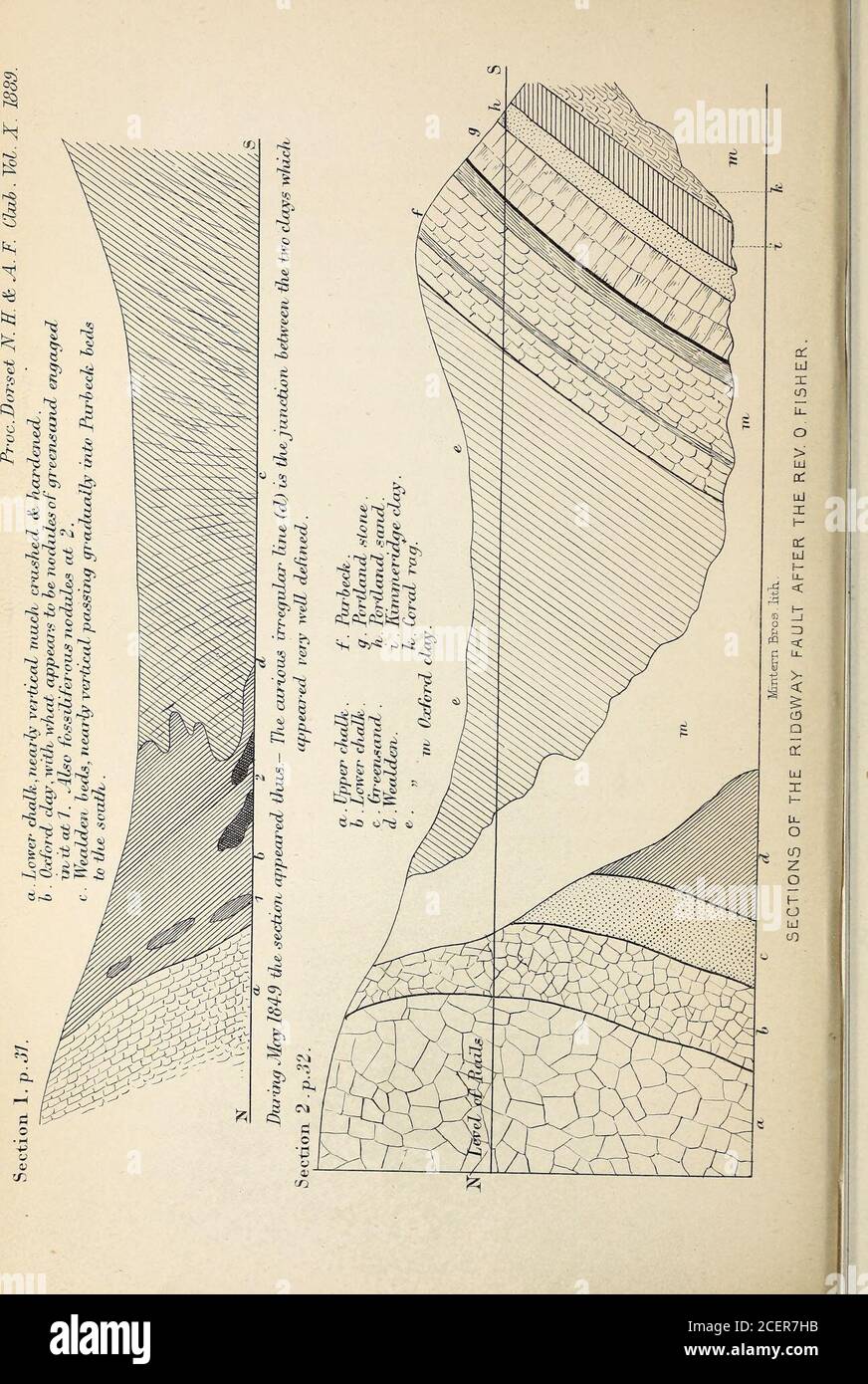. Proceedings - Dorset Natural History and Archaeological Society. thetop of Ridgway Hill forms a very noticeable feature in the land-scape. The materials composing this survival of the Eocene bedshave been extensively quarried for economic purposes, and thesteep yellow coloured sides of the gravel pits form a strongcontrast to the more undulating surface of the surrounding chalk.The railway crosses Ridgway Hill by means of two tunnels with acutting between them, the short tunnel to the south and nearerWeymouth, passing chiefly through Purbeck beds, whilst thepiincipal tunnel, nearer Dorcheste

Image details
Contributor:
Reading Room 2020 / Alamy Stock PhotoImage ID:
2CER7HBFile size:
7.1 MB (554.1 KB Compressed download)Releases:
Model - no | Property - noDo I need a release?Dimensions:
1295 x 1929 px | 21.9 x 32.7 cm | 8.6 x 12.9 inches | 150dpiMore information:
This image is a public domain image, which means either that copyright has expired in the image or the copyright holder has waived their copyright. Alamy charges you a fee for access to the high resolution copy of the image.
This image could have imperfections as it’s either historical or reportage.
. Proceedings - Dorset Natural History and Archaeological Society. thetop of Ridgway Hill forms a very noticeable feature in the land-scape. The materials composing this survival of the Eocene bedshave been extensively quarried for economic purposes, and thesteep yellow coloured sides of the gravel pits form a strongcontrast to the more undulating surface of the surrounding chalk.The railway crosses Ridgway Hill by means of two tunnels with acutting between them, the short tunnel to the south and nearerWeymouth, passing chiefly through Purbeck beds, whilst thepiincipal tunnel, nearer Dorchester, is excavated through thechalk. The sections lying between the two tunnels are now almostobliterated owing to the growth of vegetation upon them, whilstthe dip of the beds can scarcely be estimated since the surface soilhas been washed down from above to such an extent as to renderthe identification almost impossible. Clay appears to occupy alarge portion of the space, but intermingled with the beds ofclay there occur bands of sandy character, dipping towards. THE RlDGWAY FAULT. 69 the south, and making themselves apparent by their yellow colour, by the paucity of vegetation growing upon them, and by beds ofsand ferruginous rock occurring amongst them. There seem to bethree principal beds of brown or yellow sand or sandy clay in thesides of the cutting between the two tunnels, the rest of theground being occupied by stiff blue or brown clay, the distancecovered by the whole section being not more than 200 yards. Thus, starting from the Purbeck beds at the northern mouth ofthe south tunnel, we find From 0—70 yards ... Yellow sandy clay, forming a heavy soil, with willows and boggyplants growing upon it.„ 70—120 „ ... Blue clay, covered with grass and sedges. „ 120—150 „ ... Yellow sand. Blue clay, covered with willows and brambles. Redand yellow sand, „ 150—170 „ ... Blue clay, with large nodular lumps, covered with grass.170—K tunnel ... Chalk.Of the thre